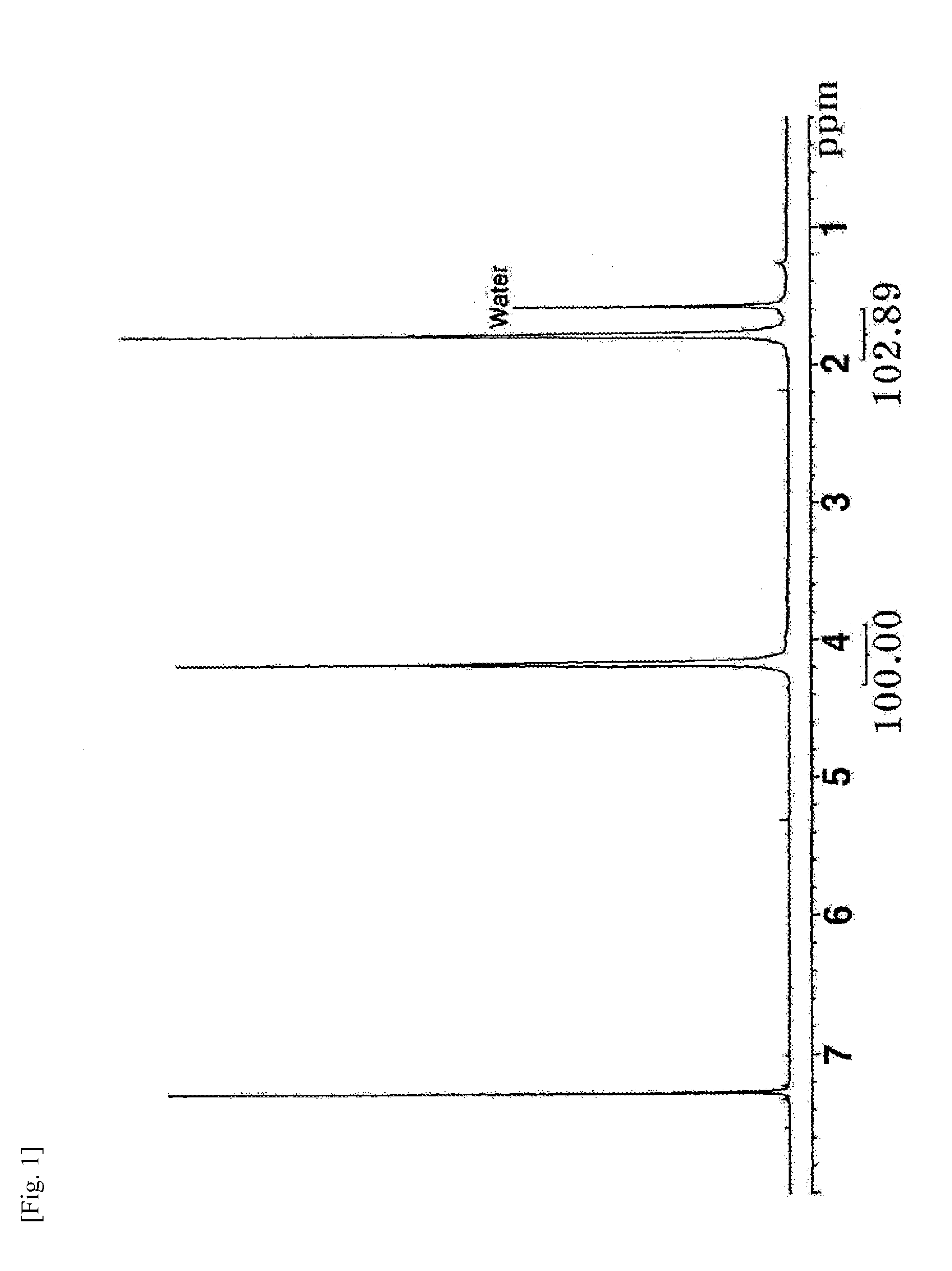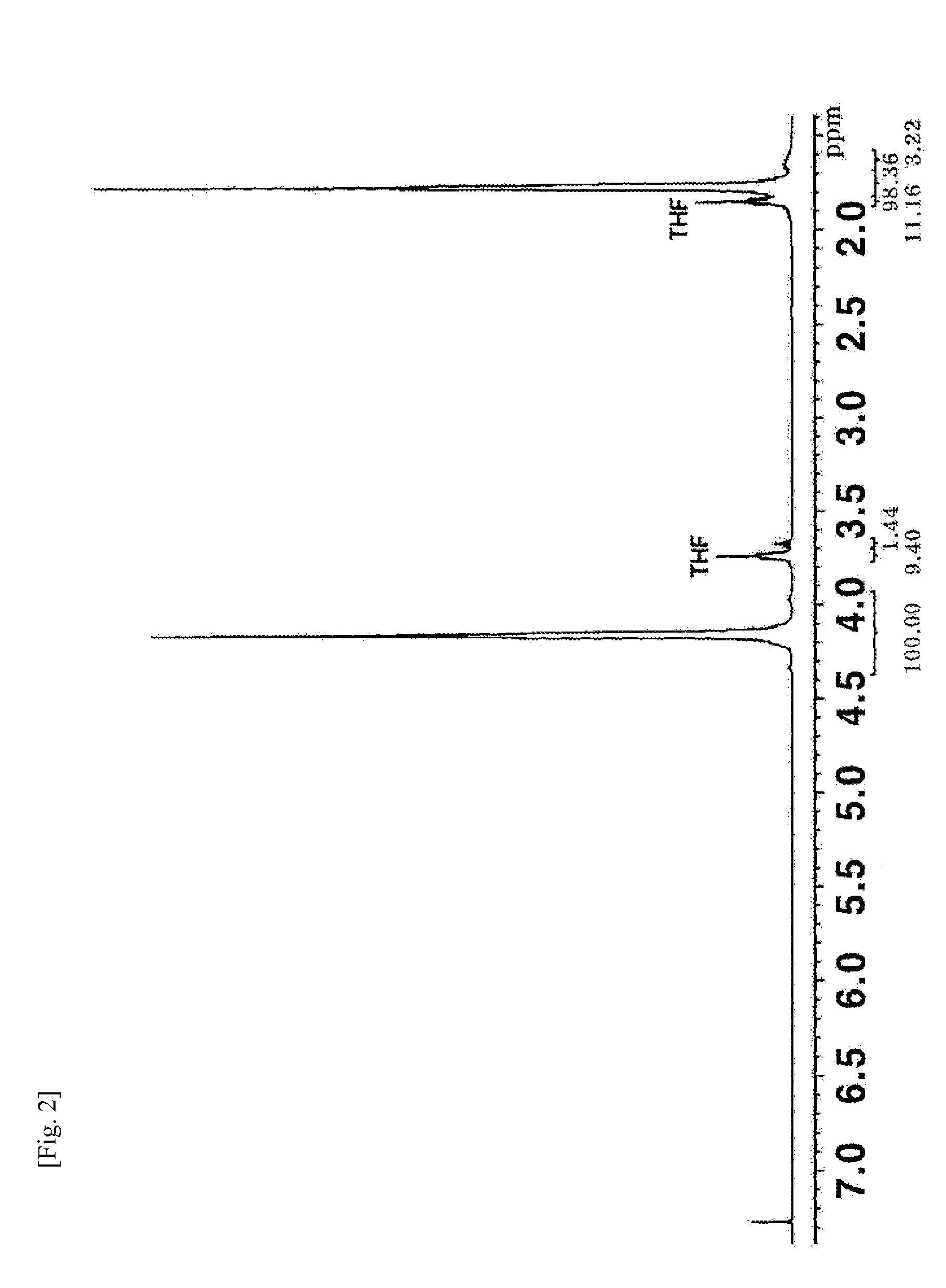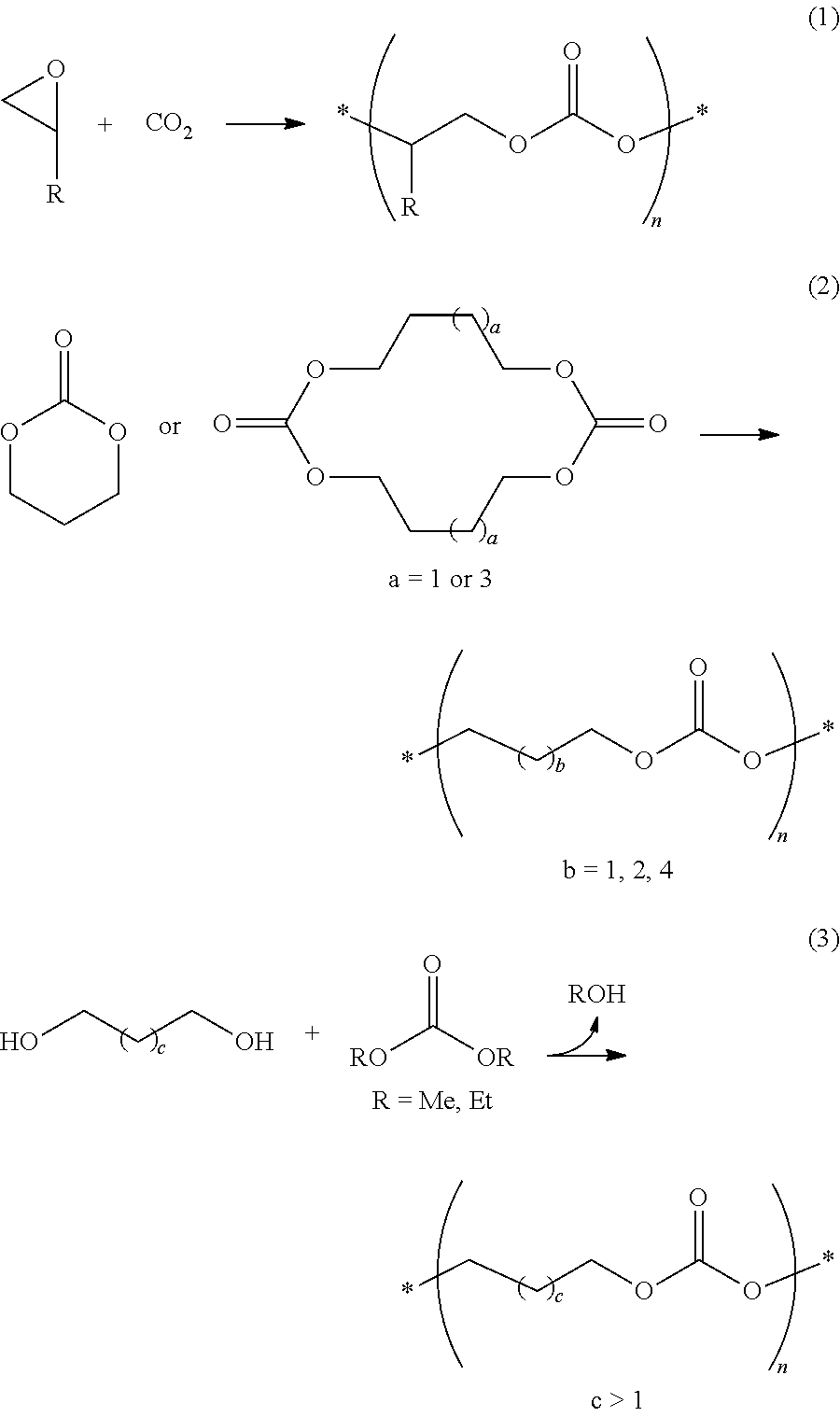High-molecular weight aliphatic polycarbonate prepared using base catalyst
a technology of aliphatic polycarbonate and catalyst, which is applied in the field of high molecular weight aliphatic polycarbonate prepared using a base catalyst, can solve the problems of limited physical properties of poly(propylene carbonate), and unsuitability of poly(aliphatic polycarbonate), and achieve good the effect of deteriorating the thermal stability of the resin
- Summary
- Abstract
- Description
- Claims
- Application Information
AI Technical Summary
Benefits of technology
Problems solved by technology
Method used
Image
Examples
examples 1-12
Condensation Reaction of 1,4-Butanediol and Dimethyl Carbonate
[0059]Step 1: Each of the bases shown in Table 1 was added to anhydrous 1,4-butanediol (10.0 g, 111 mmol) in a 3-neck flask to form HO(CH2)4O−M+, and then dimethyl carbonate (DMC) (15.7 g, 174 mmol) was added thereto. The amounts of the bases used are shown in Table 1. A mechanical stirrer was connected to one neck of the flask, a manifold attached with a vacuum line and a nitrogen line was connected to another neck of the flask, and a distillation unit was connected to the remaining neck of the flask. After the reaction flask was immersed in a thermostatic bath at 120° C., the reaction was carried out for 1 h while distilling off formed methanol and a portion of the DMC at ambient pressure. A slight amount of the reaction mixture was sampled. After removal of methanol and unreacted DMC from the sample at room temperature, the molar ratio between —OH and —OCH3 functional groups was determined by 1H NMR analysis.
[0060]Step...
example 13
Confirmation of Thermal Stability of the Resin Obtained by Neutralization Reaction in Step 3
[0065]The resin obtained by neutralization with phthaloyl chloride (step 3) in Example 4 was placed in an NMR cell, immersed in a thermostatic bath at 200° C. under a nitrogen atmosphere for 2 h, and dissolved in CDCl3 for NMR measurement. There was no change in the 1H NMR spectrum (FIG. 2). The procedure of Example 4 was repeated except that each of sebacoyl chloride, dibutyl phosphoric acid, phenyl phosphinic acid, and melamine phosphate salt was added instead of phthaloyl chloride in step 3. The resin obtained by neutralization was placed in an NMR cell, immersed in a thermostatic bath at 200° C. under a nitrogen atmosphere for 2 h, and dissolved in CDCl3 for NMR measurement. Also in this case, no change was observed in the 1H NMR spectrum.
examples 14-34
Condensation Reactions of Diol Mixture Consisting of 1,4-Butanediol (Formula 2a) and One Diol Selected from the Compounds of Formulae 2d-2h and Dimethyl Carbonate
[0068]Step 1: 1,4-Butanediol and one of the diol compounds of Formulae 2d-2h were placed in a three-neck flask. The compounds were used in the corresponding molar ratio shown in Table 2 such that the total amount was 110 mmol. To the flask, NaH (5.3 mg, 0.2 mol %) was added to form sodium alkoxides and 15.0 g (167 mmol, Examples 14-17 and 23-26) or 16.0 g (178 mmol, Examples 18-22 and 27-34) of dimethyl carbonate (DMC) was added thereto. A mechanical stirrer was connected to one neck of the flask, a manifold attached with a vacuum line and a nitrogen line was connected to another neck of the flask, and a distillation unit was connected to the remaining neck of the flask. After the reaction flask was immersed in a thermostatic bath at 120° C., the reaction was carried out for 1 h while distilling off formed methanol and a po...
PUM
| Property | Measurement | Unit |
|---|---|---|
| pKa | aaaaa | aaaaa |
| molar ratio | aaaaa | aaaaa |
| glass transition temperatures | aaaaa | aaaaa |
Abstract
Description
Claims
Application Information
 Login to View More
Login to View More - R&D
- Intellectual Property
- Life Sciences
- Materials
- Tech Scout
- Unparalleled Data Quality
- Higher Quality Content
- 60% Fewer Hallucinations
Browse by: Latest US Patents, China's latest patents, Technical Efficacy Thesaurus, Application Domain, Technology Topic, Popular Technical Reports.
© 2025 PatSnap. All rights reserved.Legal|Privacy policy|Modern Slavery Act Transparency Statement|Sitemap|About US| Contact US: help@patsnap.com



